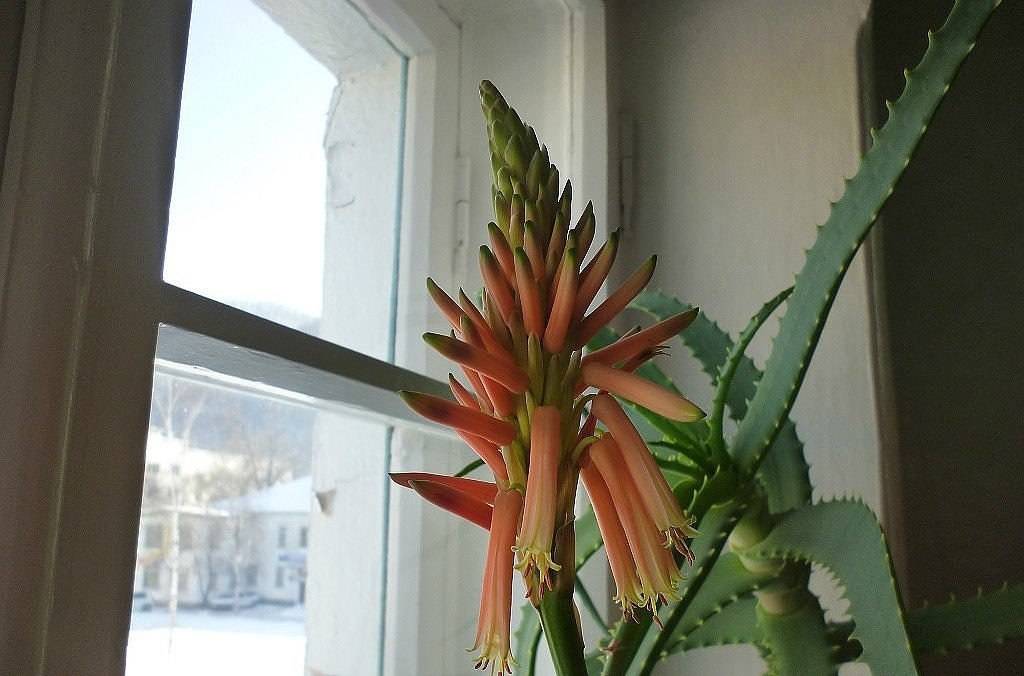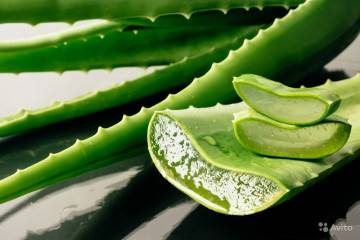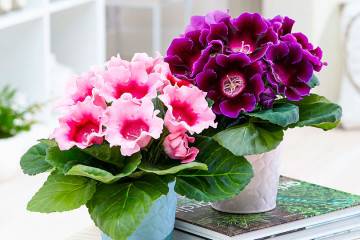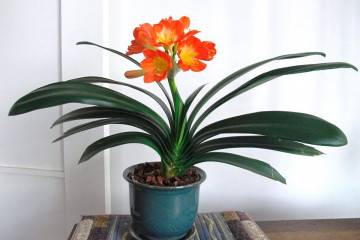How aloe blooms at home
Content:
Aloe (aloe) is prized for its medicinal properties and decorative appearance of juicy fleshy leaves. Few people know how aloe blooms. After all, this happens so rarely that the flower was christened an agave, because it is believed that it blooms only once in a hundred years.
Blooming aloe at home
If in the winter the agave was at rest, then the probability of its flowering is high. It should be noted that a young plant under 5 years old is not able to bloom. Usually, inflorescences appear at 6-7 years of life of a houseplant.
First, the agave has a long and elastic peduncle. Usually it grows to a height of 30-35 centimeters, although there are rare species and varieties that have a peduncle of 80 centimeters. Soon, inflorescences appear on it with small flowers in the form of tubes. Indoor aloe vera has an orange flower, but there are flowering varieties with yellow, pink and scarlet buds.
Periodicity and timing of flowering
Aloe grown in the house bloom every 15-20 years. But with poor care, the plant does not produce a peduncle for its entire life. The flower usually blooms in March. The flowering period depends on how the wintering went and whether the care was carried out correctly. The buds may fall off as early as May, but there are times when flowering continues until September.
The most common blooming aloe species
There are about 300 species of blooming aloe. They all bloom in the spring or early summer.
The most common and well-known types and varieties of blooming aloe:
- Vera is the most common species with orange blossoms.
- White-flowered - a rare variety from the island of Madagascar with white flowers.
- fan-shaped - the leaves are arranged in a fan-like manner, blooms with red flowers.
- Jackson - with tubular buds of red-lilac color.
- Descoings - differs in leaf plates in the shape of a triangle and yellow flowers.
- Tree-like - has a different color palette, in which there are red, yellow, orange and pink colors.
- Camperi - characterized by a racemose and branched peduncle with scarlet flowers.
- Pretty - differs from other species in purple-coral buds in the shape of a bell.
- Soapy - on the surface of red, yellow or pink petals there are small specks darker than the main background.
- Frightening (another name is terrible) - there are thorns on the leaf plates, and the flowers are scarlet with an orange tint.
There are so many varieties that it will not be difficult to choose for yourself the favorite and the most suitable one for the decor in the room.
Why buds are not tied
The most important reason for the lack of budding in aloe is improper care. Despite the fact that the plant is very unpretentious, special conditions must be created for its flowering.
The main reasons why inflorescences do not appear in aloe:
- the bush is still young, the plant has not physiologically reached the age at which it could set buds;
- lack of moisture or waterlogged soil in the pot, which provoke stagnation of moisture and the appearance of diseases;
- lack of lighting;
- lack of dressing or incorrectly calculated dosage of fertilizers;
- incorrectly selected composition of the earthen mixture for planting in a pot;
- the absence of transplants with the growth of the root system, which makes the pot cramped;
- too humid indoor air;
- constant sudden changes in temperature in the room;
- cold drafts;
- the appearance of pests;
- bush diseases.
How to make aloe bloom at home
For a flower to bloom, it is imperative that it goes into hibernation at the end of each season. During the dormant period, the life processes of the plant slow down, and it accumulates strength for active growth after awakening.
However, succulents rarely go into hibernation themselves. In such cases, you need to do it artificially. First, slowly lower the temperature to 11-14 degrees, then remove the flower in a dimly lit place. The frequency of watering will also need to be reduced, and with the departure of the aloe to rest, stop altogether.
Care rules on which flowering depends
Before purchasing aloe vera, you need to familiarize yourself with the conditions under which the plant should be grown. A succulent plant in nature grows in deserts and steppes, does not suffer from drought and dry air, which makes it clear that waterlogging of the soil and air should not be allowed.
Agave care measures that will help the plant bloom are very simple.
The soil
The soil should be soddy with a neutral or slightly acidic pH level. For planting, a special earthen mixture for succulent plants is purchased or the substrate is prepared at home. To prepare a useful and nutritious soil mixture, they take loose soil, river sand, compost or humus. To prevent stagnation of moisture after watering, it is necessary to constantly loosen the soil in the pot or lay drainage material on the bottom of the planting container before planting the flower.
Top dressing
During planting, organic matter is necessarily introduced in the form of humus. For healthy growth, regular nutritional supplements with mineral fertilizers are necessary. In order not to overfeed the flower, it is better to purchase complex mineral fertilizers in the store, on the packaging of which the exact dosage and frequency of feeding is given.
Watering
The main thing is not to "overflow" the plant, as it does not like strong moisture. After each watering, it is necessary to loosen the soil, which will increase its air permeability.
Temperature and humidity
To create conditions in the room where the aloe is grown similar to those in the native desert for the agave, it is necessary to monitor the humidity and temperature conditions. The optimum temperature is 12-18 degrees. Humidity should also be below average.
How to properly care for blooming aloe
When the aloe bloom finally arrives, its care changes. During this period, you should not unnecessarily disturb the plant, but only if necessary. During this period, the temperature of the aloe content is slightly increased, and with a lack of natural light, it is artificially created using phytolamps.
During flowering, top dressing should be cut and the plant should be fed with more potassium-phosphorus fertilizers. Watering remains as usual.
What will happen when the petals fall
After the aloe has bloomed, sooner or later the moment will come for the petals of the bud to fall.Immediately after this, you need to carefully remove the inflorescence and peduncle, if necessary, remove rotten or dried leaf plates. The peduncle is removed for decorative reasons, as well as for physiological reasons. If you leave it after flowering, the plant will continue to give some of its strength to support the life of the peduncle.
The place of cuts of leaves and peduncles must be disinfected. The processing of the sections is carried out with a solution of potassium permanganate or furacilin, you can sprinkle crushed tablets of activated carbon.
After flowering, the plant becomes more vulnerable and depleted. To increase its tone before hibernation, nutrient-rich feeding is carried out. It must be complex and include a large amount of minerals, especially nitrogen, in order for the plant to gain green mass. In addition to mineral fertilizers, it will not be superfluous to add organic matter. If fertilizers are applied in liquid form, it is better to carry out this procedure after watering and loosening the soil.
Dormant period
Before sending aloe for the winter, reduce watering. The plant is transferred to a cooler place. The temperature of the content should be no higher than 14, but not lower than 10 degrees. the air must always be dry, otherwise the plant can get sick with fungal diseases.
During the rest period, frequent watering is contraindicated, one light watering per month is enough. The plant will live well even without watering in winter. The need for watering is checked by the condition of the earth: until it is completely dry, the soil cannot be watered.
The centenarian is known for its ability to cure almost all diseases and ailments. In addition, it has very unusual decorative leaf plates. Aloe blooms very rarely, which is why many owners may even be surprised at this fact. Perhaps therefore, when a plant begins to set buds, it is considered a good omen. People believe that the agave blooms, bringing happiness, health and success to the house.




















